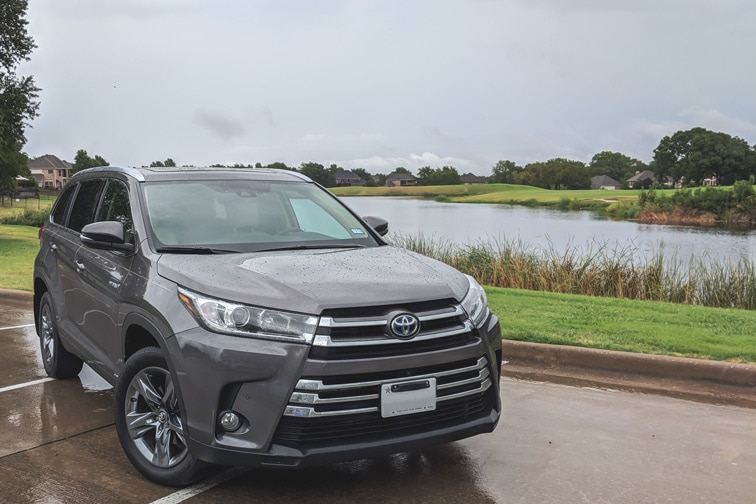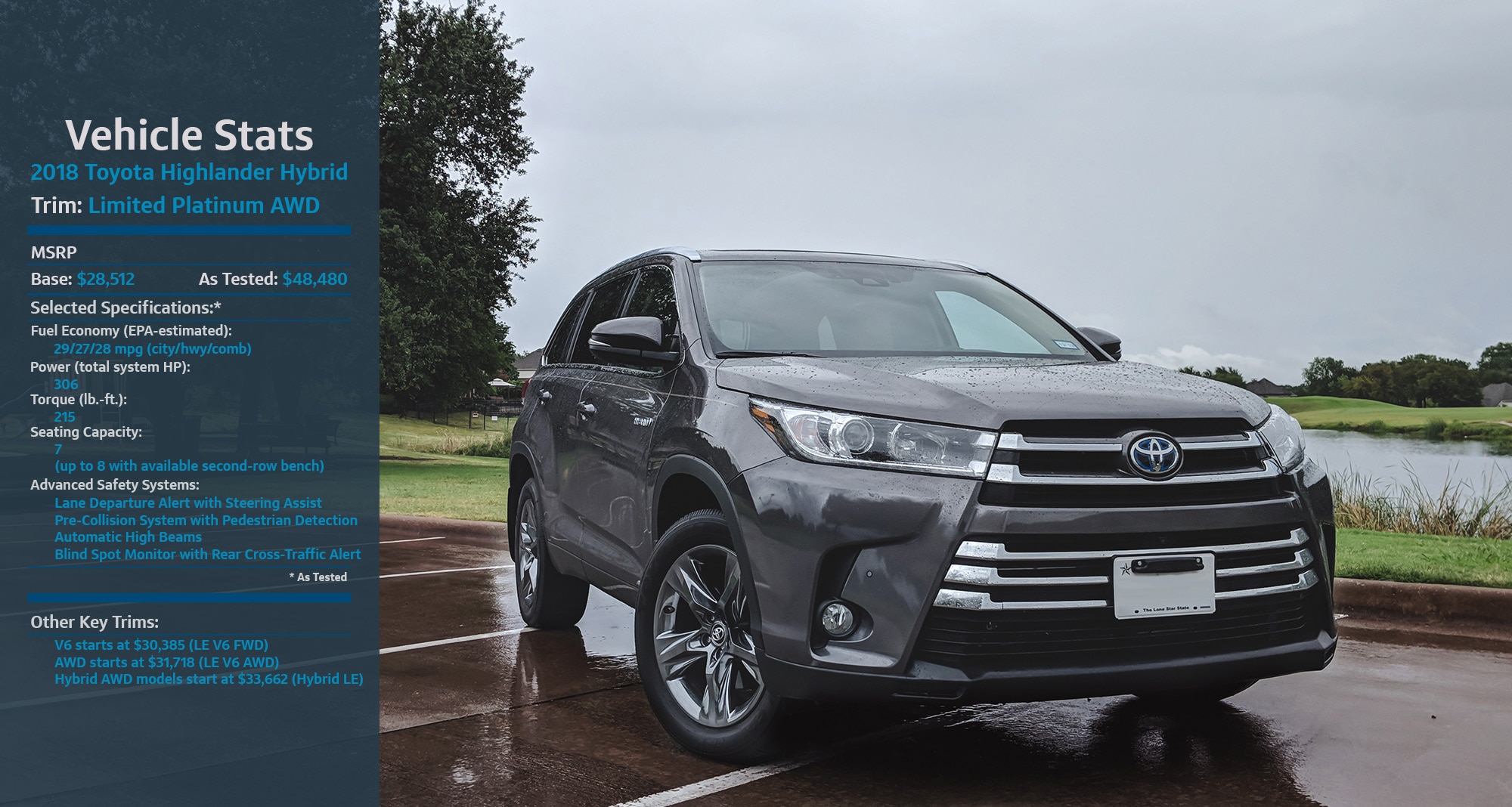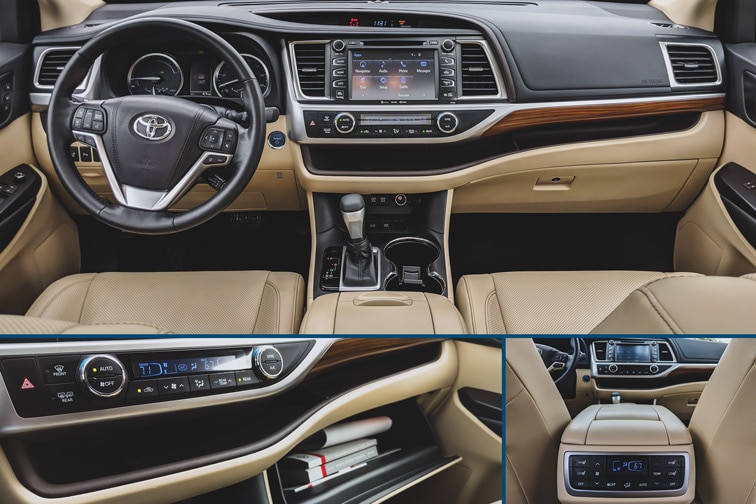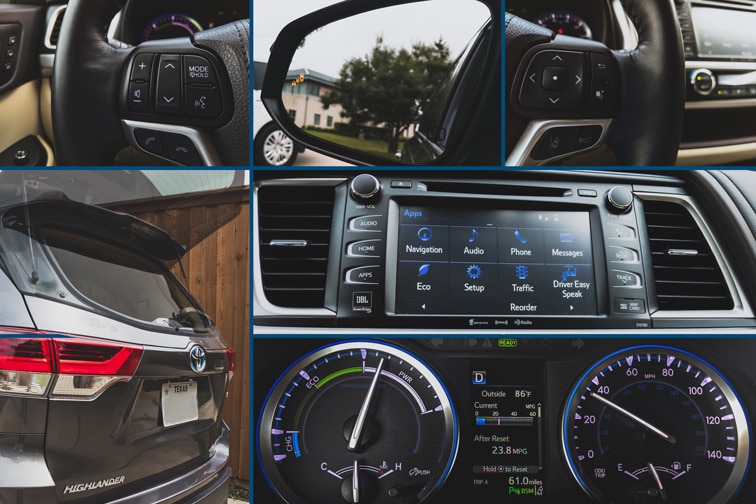2018 Toyota Highlander Hybrid Review
The popular and reliable SUV is comfort food in crossover form.
 Aaron Miller/Capital One
Aaron Miller/Capital One
The Toyota Highlander is full of comforting intangibles. It’s not meant to deliver a dopamine-filled driving experience like some off-road oriented SUVs, nor does it caudle quite like its corporate crossover cousins from Lexus. Rather, the 2018 Highlander is your mom’s meatloaf, in crossover form: a hearty mix of ingredients that results in a practical, cost-effective and user-friendly comfort food that works equally well on a Tuesday or Saturday night, and is almost impossible to dislike.
Tear away the SUV veneer, and the Highlander’s crossover platform has a lot in common with both the Camry sedan (pre-2018) and the Sienna minivan. That’s a key point, because if minivan-esque practicality is key to crossover success among families, driving more like a car than a truck is the remaining piece of the puzzle that results in a sales figure 75% higher than that of Toyota stablemate and fellow seven-passenger-capable 4Runner – a more traditional truck-like SUV.
Toyota gave us a 2018 Highlander for a week so we could put it through its paces, so that we did. With four drivers and varying family situations, opinions varied greatly, but we arrived at a single conclusion: Highlander’s a vehicle built around a core philosophy of reliability and practicality, just like meatloaf, and from that perspective, it’s a heck of a vehicle.
 Aaron Miller/Capital One
Aaron Miller/Capital One
YOUR LEFT-BRAIN’S INCOGNITO MODE
On weekdays, children haul backpacks. On weekends, it’s sports equipment. Having ample room for both has long been a non-negotiable factor for families looking for a vehicle. Those omnipresent needs drove the meteoric rise of minivans a generation ago, and today keep crossover SUVs firmly embedded at the top of the family vehicle sales mountain.
Enter Highlander.
Have a larger family? It can fit up to eight, if you opt for the 60-40 split-bench second row. Go for captain’s chairs instead, and not only is the third row more easily accessible, but second-row passengers are likely to be every bit as comfortable as those in front, with just as much shoulder and hip room and more than enough head and leg room for anyone not capable of dunking on a 10-foot rim.
Unsurprisingly, the mother in our quartet was fond of the family-oriented engineering. There are enough passive and active safety features (more on them later) to assuage even the most risk-averse drivers. The LATCH system earned high praise for its ease of use, as did the convex mirror located on the overhead sunglass storage area, which enables passive child monitoring. Toyota’s Driver Easy Speak, which acts as a de-facto intercom by broadcasting the driver’s voice through the rear speakers, was another thoughtful option—one that we nicknamed the “Voice of God” feature. It can introduce an unwanted echo if left active on a permanent basis, but it can also cut down on the need to turn around while threatening to “pull this car over” if the tomfoolery of the next generation doesn’t stop. It’s hard to put a price on that.
In a very real sense, all that family-friendliness means that Highlander is a minivan in SUV clothing (see above re: Sienna underpinnings). That should immediately place it high on the list for anyone who has the need for a minivan but remains scarred from a childhood spent riding in the faux-wood-paneled people haulers that roamed the streets from the mid-1980s to 1990s.
Think of the Highlander as suburban camouflage, a minivan incognito that can satisfy the left side of your brain’s need for practicality without projecting a sliding-door image onto the world.
YOU MAY ALSO LIKE:
- How to Snag the Best Leftover Cars
- Commuter Car Review: 2018 Honda Accord Hybrid
- Leasing vs. Buying a Car: A Flow Chart
 Aaron Miller/Capital One
Aaron Miller/Capital OneTHE INSIDE STORY
As anyone with siblings can attest, the worst part about family car rides is the turf war over personal space and comfort. There’s no shortage of either, at least in the first two rows, with cavernous legroom and rear A/C standard on every Highlander. The available panoramic moonroof on XLE- and higher-level trims allows plenty of light into the cabin, and the one-touch closing shade helps keep excess heat out during the summer months.
Three of our testers noted the added utility that comes with being able to open the rear window without also lifting the hatch—somewhat of a Toyota tradition that evokes its 4Runner and Land Cruiser SUV heritage. One even observed the easy-to-clean nature of the interior. The short dashboard makes for quick and strain-free wiping, and spill- and um, accident-resistant leather comes on XLE and above Highlanders.
 Aaron Miller/Capital One
Aaron Miller/Capital One
It’s not all perfect, however. Though in-line with other mid-size crossovers, the third-row (26 inches of legroom) is tight for anyone over four feet tall. The ventilated seats—generally a must-have feature in warmer climates—are marginal in their effectiveness. On the tech side of things, a persistent echo helped keep bluetooth-enabled calls brief, regardless of phone or carrier. Also the lack of a Head-Up Display—which can be found on several rivals—is something that Toyota will surely aim to rectify when it releases Highlander’s next generation in a couple years’ time.
 Aaron Miller/Capital One
Aaron Miller/Capital One
DRIVING OUTSIDE THE BOX
Walking up to a 2018 Highlander, it conveys a utilitarian ethos for owners more preoccupied with corralling youngsters than one-upping neighbors. From a visual standpoint, it’s very much in line with what one would expect from Toyota, which is to say it’s not a complex form, and it never sacrifices practicality and function in the name of style.
The same is true behind the wheel.
Highlander sparked a lively debate among our testers about the difference between soaking up bumps in the road and a lack of harshness. To the latter point, Highlander excels. It absorbs the impact of even the most extreme intersection dips at 45 mph without a hint of a jolt. For many drivers, that’s enough to qualify the ride as smooth. For others, a pervasive sensation of buoyancy counters the impressive absence of harshness. No matter one’s perspective on what makes a vehicle’s ride “good,” however, the steering is precise, the brakes feel consistent, and at no time does Highlander fail to inspire confidence in the safety of your journey.
A liberal application of the right pedal is surprisingly entertaining, which is partially why none of our testers approached the Hybrid’s EPA-estimated 28 mpg combined fuel economy. The acceleration is made possible in part by a contribution from the Hybrid system, which boosts power to 306 hp, and also by Toyota’s Continuously Variable Transmission that takes advantage of the engine’s power in the most efficient way possible.
SAFETY IS WORTH MORE THAN TWO POINTS FOR HIGHLANDER
There are two reasons to know the word vehophobia. First and foremost, with 23 base points, it’s great for Scrabble night. Second, it means a fear of driving. Like all Toyotas, Highlander comes standard with a suite of advanced safety systems, collectively called Toyota Safety Sense (TSS-P in the case of Highlander). That means that, in addition to an array of air bags from side-curtain to knee, Highlander includes a lane-keeping system that actively nudges you back into your lane if you start to wander, automatic braking designed to reduce the severity of a collision if you neglect to slow down in time, and automatic high beams, among others. Those systems help the Highlander qualify for the
OVERALL IMPRESSIONS
Highlander is set to march into 2019 with few changes, which should mean ample opportunity to find a great deal on “leftover” 2018s. That increases the left-brain practicality argument that already leads to
Still, it’s a Toyota, which means dependability, reliability, and practicality are not only key considerations, but areas in which
Written by humans.
Edited by humans.
 Aaron Miller
Aaron MillerAs a veteran automotive journalist, I have been fortunate enough to drive some of the most desirable cars on the planet and get to know some of the most important people in the industry. Before joining Capital One, I served as the Cars Editor for a major national website, and covered industry news and analysis for well-known automotive-specific sites. I also wrote feature articles and reviews for niche enthusiast websites. I’ve been obsessed with cars since—literally—before I can remember, with my collection of die-cast and slot cars taking center stage during my formative years. Simply put, for me, working isn’t really “work.”
Related articles
View more related articles